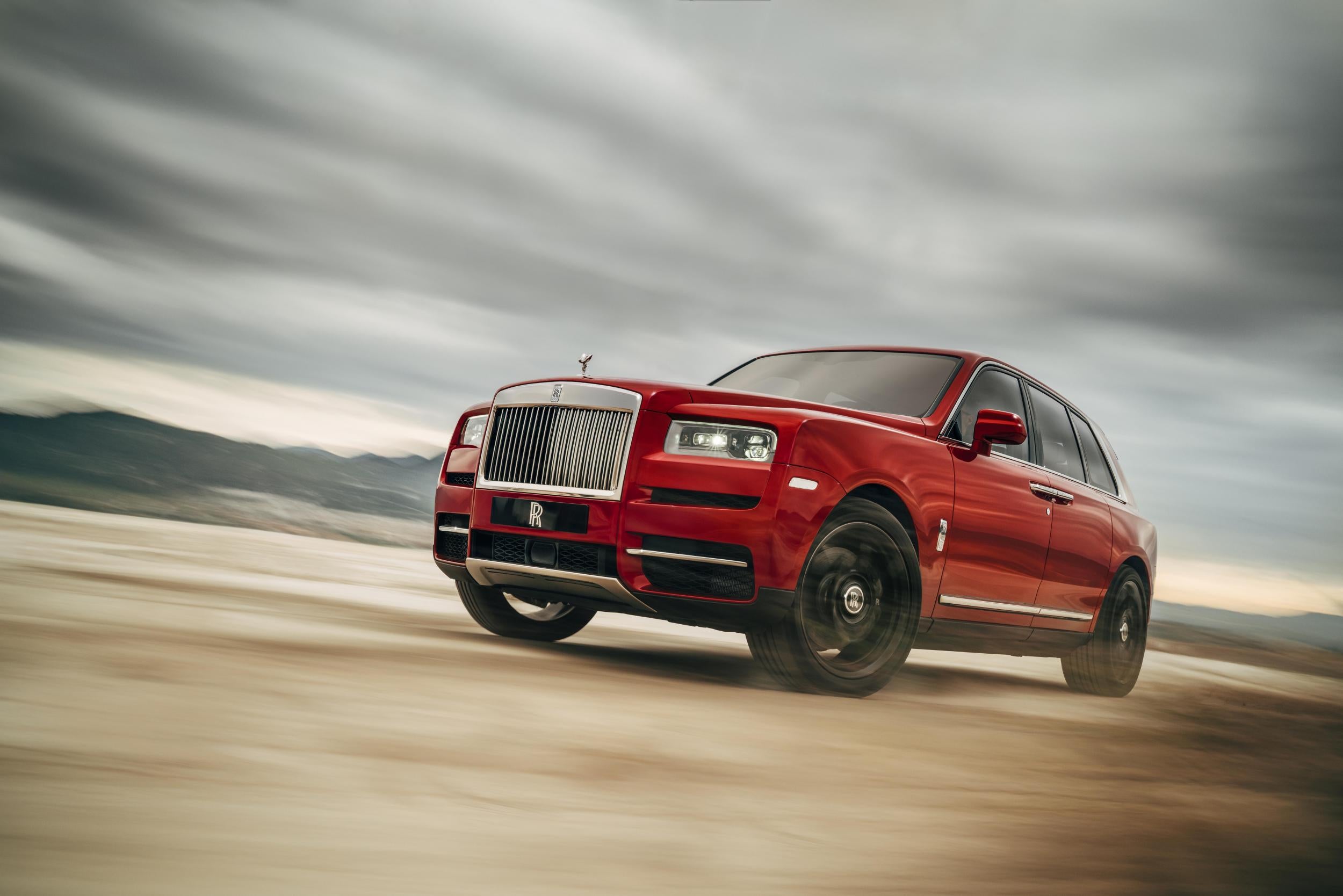Rolls-Royce release £250,000 SUV for millennials
'These customers were younger, very successful high-net-worth individuals who are heavily engaged in the experience economy,' says brand

Rolls-Royce has targeted their new £250,000 4x4 car at millennials in an attempt to shed the luxury car brand’s image as the domain of chauffeur-driven businessmen.
But the price tag for the wildly-expensive off-roader, called the Cullinan in honour of the world’s largest raw diamond, stands in stark contrast with the spending power of most 20 and 30-somethings.
The British brand's luxury vehicle is aimed at a burgeoning class of super-rich millennials and affluent home-owners who buck the wider trend of young people working in low-wage precarious jobs faced with the prospect of living in private rented accommodation for their entire life.
For the first time, the Goodwood-based company are aiming their latest car at a new demographic of “younger, very successful high-net-worth individuals” who have higher disposable income.
“When Rolls-Royce announced three years ago that it would launch Cullinan, it did so in the knowledge that its customers around the world had asked it to build ‘The Rolls-Royce of SUVs’, with luxury, performance and usability not seen before in the SUV market,” explained the brand in a press release.
“Many of these customers were younger, very successful high-net-worth individuals who are heavily engaged in the experience economy, and wanted a Rolls-Royce that would take them to the ends of the Earth in ultimate luxury.”
The extent of the material wealth of the buyers is reflected in the types of recreational pursuits Rolls-Royce suggests its drivers might carry out and how the model will accommodate them.
“For those wishing to carry a long item back from their trip – whether it be a Mark Rothko from the Art Gallery or a newly discovered artefact from the latest archaeological dig – a loading length of 2245mm and load capacity of 1930 litres is accessed by electronically raising the boot floor to meet the seat base, allowing the item to slide through effortlessly,” said the car marker.
The car also includes a “drinks cabinet with Rolls-Royce whisky glasses and decanter, champagne flutes and refrigerator”. Other special features include a retractable table and leather chairs that turn the back of the car into an outdoor dining area.
However, the car's huge price tag is in stark contrast with the budgets of the vast majority of millennials: a third of young people face living in private rented accommodation all their lives a report by the Resolution Foundation found last month.
The think tank said 40 per cent of “millennials” - those born between 1980 and 1996 - were living in rented housing by the age of 30.
This figure is twice as many as "generation X" - those born between 1965 and 1980. The body's Home Improvements report argued "generation rent" needed far greater help and called for more affordable homes for first-time buyers to be built and greater protection for those in the rental sector.
“People of all ages in London are struggling to meet their basic needs, let alone buy a £250,000 car," a spokesperson for the London Renters Union told The Independent.
"Housing is at the centre of a growing wealth gap and the vast majority of millennials have only a lifetime of insecurity and high rents to look forward to. But we can change course – if London’s three million renters get together, we can reboot the housing system to get better conditions for renters and more affordable homes for everyone.”
Millennials' difficulties are not only related to the housing sector and the collapse of home ownership rates.
The added combination of low wages, expensive degrees and debt mean millennials must confront financial challenges not faced by their parents.
Subscribe to Independent Premium to bookmark this article
Want to bookmark your favourite articles and stories to read or reference later? Start your Independent Premium subscription today.

Join our commenting forum
Join thought-provoking conversations, follow other Independent readers and see their replies